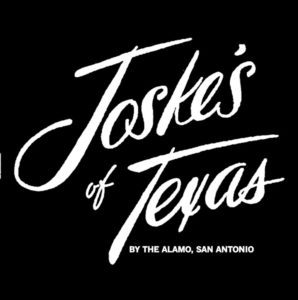
SAN ANTONIO – The Joske’s Department Store, so long a beloved presence in Texas, yet another example of a revived department store location that is a mall and downtown anchor. This follows a recent trend of refitting large downtown department stores. In the case of Joske’s, the project promotes the name and history of the department store as a lure as part of their Shops at Rivercenter development.
Joske’s is older than much of San Antonio; it opened in 1867 and for over 100 years defined what it was like to be a Texan, including a saddlery department. Like so many department stores, the merchandise began to be like every other department store, and its uniqueness disappeared. In the case of Joske’s, it became part of Allied Stores, which the unlikeable Canadian Robert Campeau took into bankruptcy.
This is the story, over and over of the demise of the local department store. What was a community resource, a notable local landmark and civic accomplishment, ruined and corrupted. There is a theory to this, a path that nearly every department store has taken. Indeed the true department stores that have succeeded are the ones that have had only one location, ergo the success of London’s Harrods and Selfridges. Indeed many standalone department stores were highly entrepreneurial “tall malls” that included numerous local and national leased tenants and unique features.
In the case of Joske’s, the entire building is rebuilt inside of the facade, what historic preservationists call façadism. In most cases with department stores, the inside is not historic, as store interiors are often stage sets. (Many notable exceptions, of course.) The Joske effort is led by Ashkenazi Acquisition, which is a real estate developer interested in developing stores with an investment strategy that “aims to acquire irreplaceable properties in premier locations with the potential for significant increase in cash flow and residual value.”
Sounds smart; projects include everything from the Plaza Hotel to Faneuil Hall to D.C.’s Mazza Gallerie and Union Station. Interesting and evocative naming includes the Hechinger Mall.
Macy’s (NYSE: M) has missed this trend entirely; the Miami Burdine’s, Brooklyn A&S, Chicago Marshall Field, Richmond Thalhimers and Minneapolis Dayton’s have all been lost in the chain’s descent into boring-ness. Macy’s also lost some of its unique brand names in a lawsuit. Genius entrepreneur Ellia Kassoff filed for many of the brands they discarded; read the story of department store brands HERE. Sadly, none of his revived brands have yet been connected to a real estate project.
The redevelopment process shown in Joske and others are part of a process, the stages of department store decline. This is a summation:
- Entrepreneur: A businessman, often but not always an entrepreneur of Jewish or immigrant status, opens up a small retail store. It grows, adding product lines as they are mastered.
- Organic: Department store grows slowly, from small retailer to large downtown presence over a century. Departments and product lines added in relation to community need, and differing city to city.
- Corporate: Store adds suburban units and opens up satellite stores in other cities, sometimes purchasing smaller retailers and rebranding them under the parent name, though still privately held.
- Urban decay: Riots and Great Society scare upper middle class from cities. Downtown stores lose influence, and product lines diminish. Downtown store survives, but diminished.
- Sellout Corporate: Families begin selling out to larger companies, often publicly traded. Level of “success” through new ownership brings efficiencies but less product differentiation. This is coupled with rise of exclusive department store-centric product lines like Ralph Lauren and Estee Lauder. Some companies launch discount chains.
- Decline and Rationalization: Corporate parent closes downtown stores in all smaller and mid-market cities. Number of department store brands diminish, as larger brands taken over by May, Dillard’s, Hecht’s, Macy’s.
- Takeover & Bankruptcy: Profiteers and other raiders raid pensions, burn off assets. Some go to bankruptcy and are rescued; others are steered into bankruptcy.
- Commodity Stage: Stores are completely commodified, with product lines similar across nation and stores operating under national banners that include Macy’s, Dillard’s and in some places, Belk. Regional eccentricities survive in struggling Bon-Ton chain, and companies like Stage (Peebles, Palais Royal).
- Department Mall: Original downtown store, often empty, purchased by real estate investors. With historic tax credits and downtown boosters, restore the building, using the nameplate of the original store as a hint of what was. This is also seen in London’s Whiteley’s, once one of the most famous department stores in the world.
- Revival: This is the possible and logical next step, as individual regional store identities appear and reappear as unique retail entities, and they cease being malls.
Below, a video about the project, put together by the local utility.

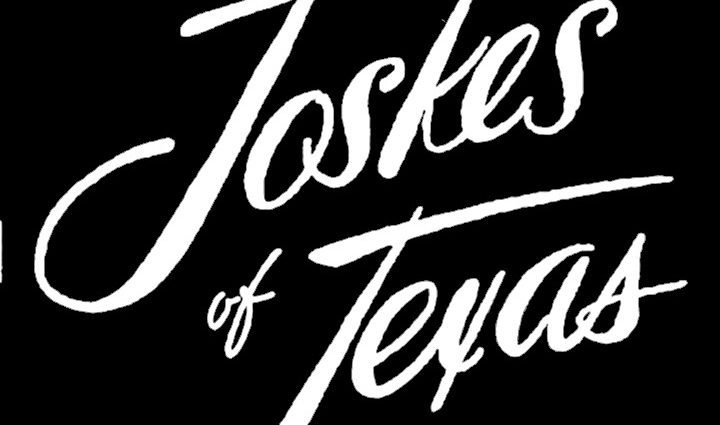

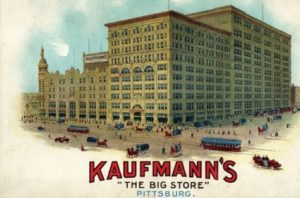
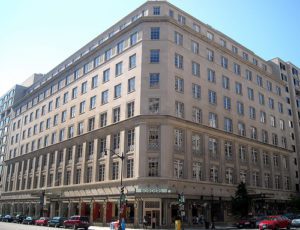
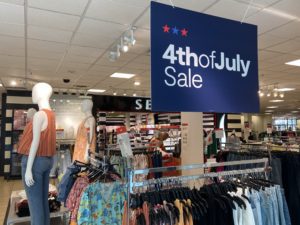
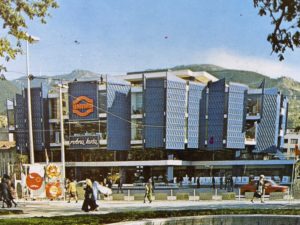
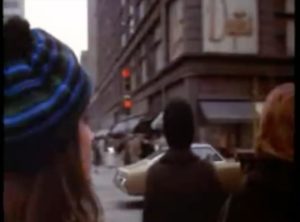
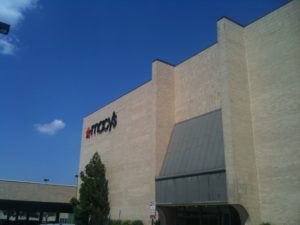
BCUSD 100
Oh, man, I used to live in NYC. The NYC the Stones sang about in “Shattered.” Manhattan was always rich, though, and I once visited with someone my dad knew who was staying at The Plaza. At the time, I wanted to be an architect. I remember everything was amazing. The view from the window, too. It sounds like this is a good company, and I look forward to seeing what they do with The Plaza.
As for the stages, you know, I live in what is basically a working 80s museum. Politics and world leaders, and even the AIDS crisis aside, for me, in my home, it was the best time.
So it should not be read as a “trendy” person saying this when I keep saying companies need to keep up and adjust. I still listen to my 8-tracks. But I’m an individual.
At the stage of urban decline, what begins to fail is these companies do not adjust their stores to shifting demographs. Not every store has the same needs: in 1987, a woman in Harlem probably can’t afford Estee Lauder’s usual fare, but a woman in White Plains very well could.
We further see the same problem later down the line when now, I live near L.A., and when I go into Target around Christmas (not crazy about Big Boxers, but no one else sells iodine and witch hazel at sane prices) they’re selling snowpants. A few people maybe heading to Big Bear who don’t have snowgear might buy it, but it mostly goes unsold.
Aside from the obvious corporate raiding when things turn south that is the nails in the coffin, the whole darn thing could’ve been avoided in the first place if they’d not ignored the changing needs of local markets.
(I don’t know anything about Texan life save ZZ Top and chatting with a couple of hippies over coffee and cigarettes at a diner on my way out to CA many years ago, but it looks great!)
Well an update shows the project stalled.
There is a mall in Buenos Aires which is in what was a branch of Harrods. This later became an independent company which had permission to use the Harrods name as long as it was in continuous use. The Buenos Aires store closed eventually and efforts to revive use of the name failed in litigation. The owners did get a right to use the name for the mall but not for revived department store operations.